The 2022 equality statistical reports published today, cover staff and student data for the academic year 2020-21.
This is the fifteenth year that Advance HE (and previously the Equality Challenge Unit) has published national staff and student equality data to highlight opportunities and challenges regarding the promotion of equality, diversity and inclusion (EDI) in UK higher education.
The two reports present a snapshot of staff and students’ age, disability, ethnicity and sex, as well as a range of intersectional data to show how various identity characteristics interact in their relation to differential outcomes.
The full Students statistical report 2022 and Staff statistical report for 2022, along with a full set of infographics are available for Advance HE members here
Join our webinar: Equality in Higher Education: insights from the 2020-21 staff and student records, 10:00-11:00, 22 November 22 exploring how these insights can be translated into institutional aims and areas for additional research.
This year there are data to evidence:
- More staff and students are disclosing as disabled
- The Black, Asian and minority ethnic awarding gap for Firsts and 2:1s is – slowly – starting to close
- For the first time, there are more female postgraduates than male.
Staff statistical report 2022
Headline findings:
-
Disability disclosure rates among staff working in UK higher education has consistently increased in the last decade. The increase is marked this year, increasing by 7.1% since 2019/20, compared with only a 0.3% increase in the year before. The proportions of staff who disclosed as disabled have consistently been higher among professional and support staff than academic staff: 7.0% of professional and support staff and 5.1% of academic staff disclosed as disabled in 2020/21 – slightly higher than the proportions in 2019/20 but double the proportions in 2009/10 (3.4% and 2.5%, respectively).
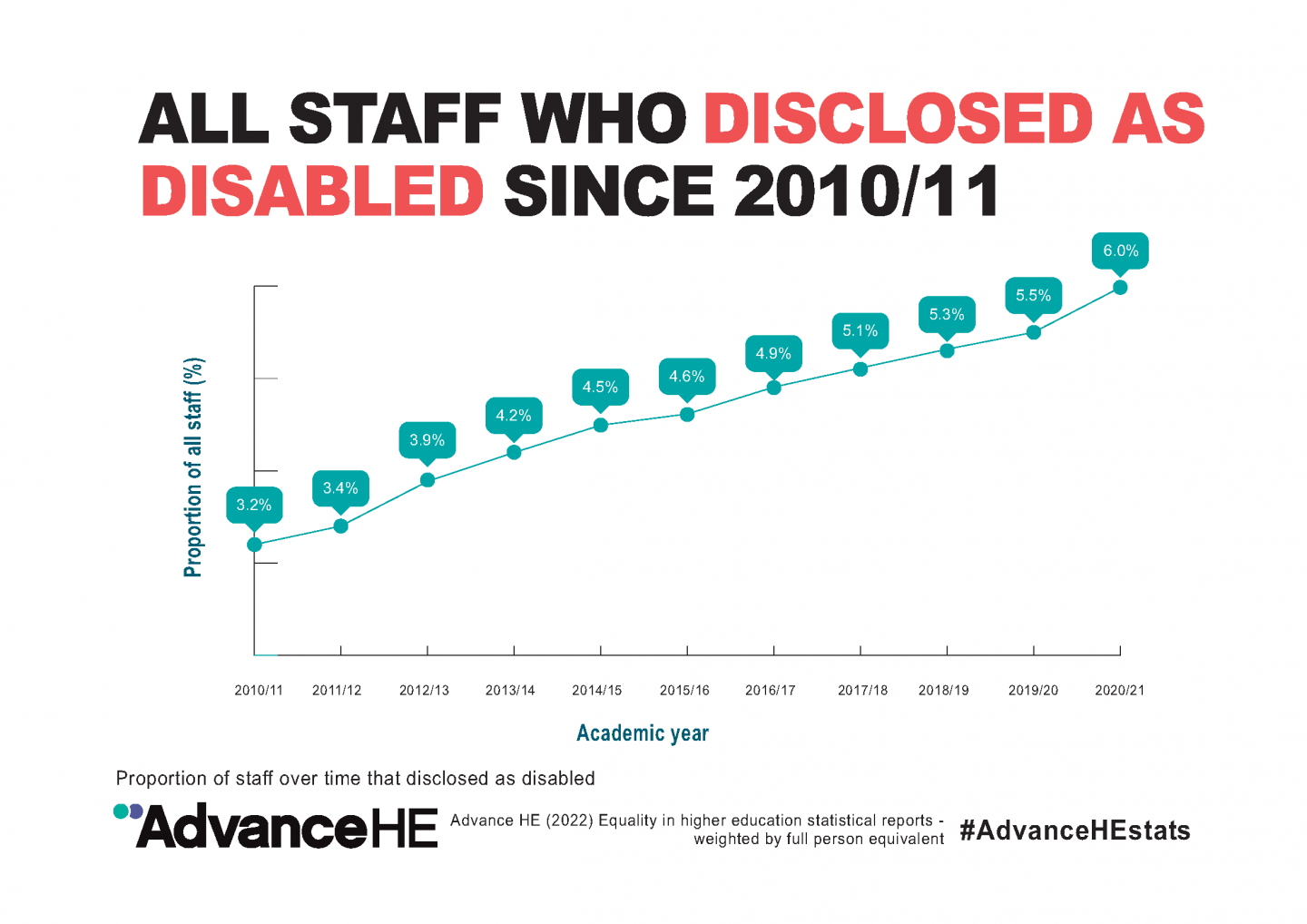
-
Sex This year, for the first time in this report series, the data show that there are more female than male postgraduates. As is evident from this graph, this milestone is not mirrored in their progression to academic posts and professorships, with only marginal changes in the representation of female academic staff (47.0% in 2020/21 compared with 46.7% in 2019/20) and of female professors (28.5% in 2020/21 compared with 27.9% in 2019/20).
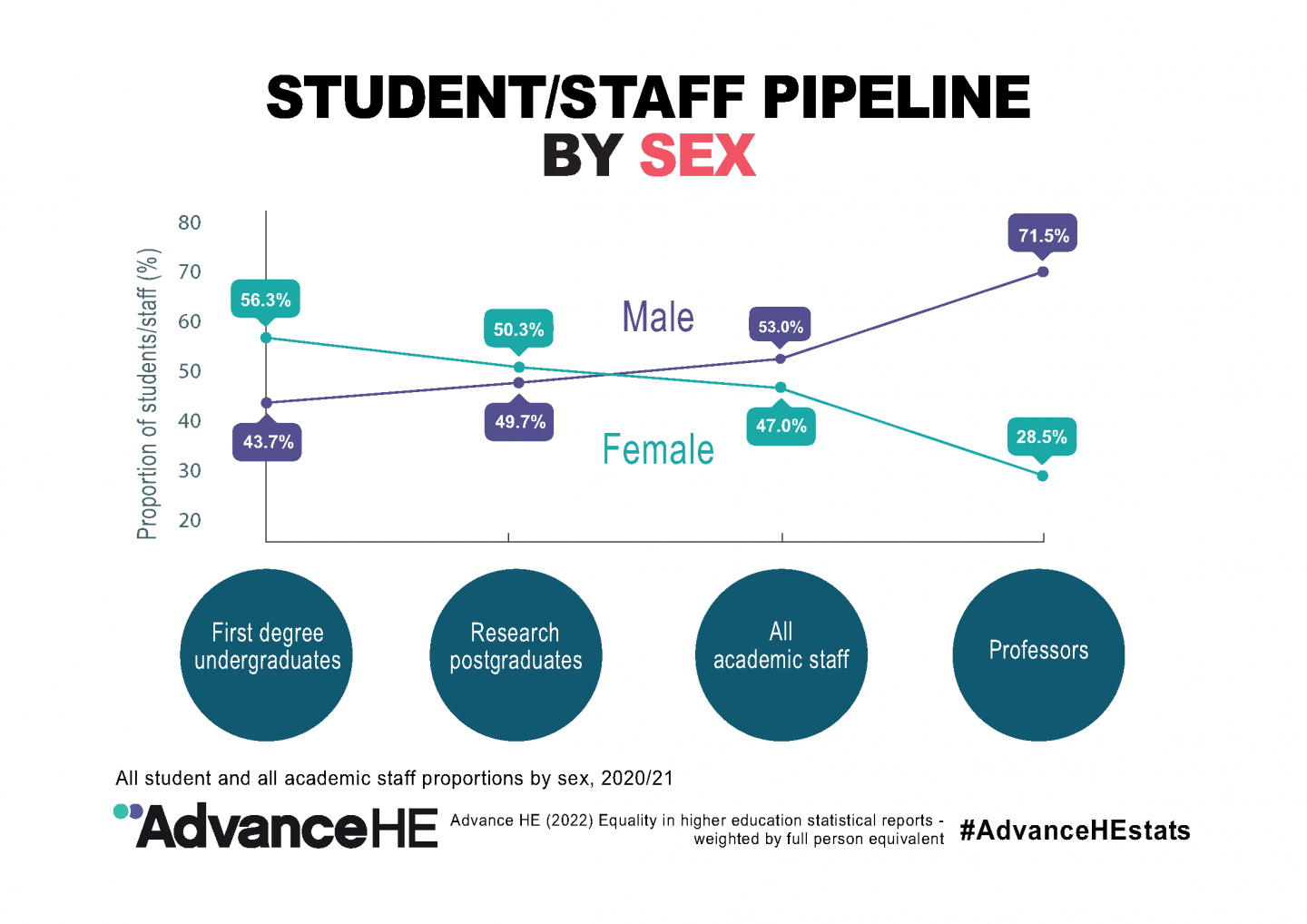
-
Ethnicity Overall, the representation of Black, Asian and minority ethnic staff has remained relatively stable, though increasing to 16.3% of all staff in 2020/21 compared with 15.5% of all staff in 2019/20. Black staff remained underrepresented among professors (0.6% in 2019/20 (left) and 0.7% in 2020/21 (right)).
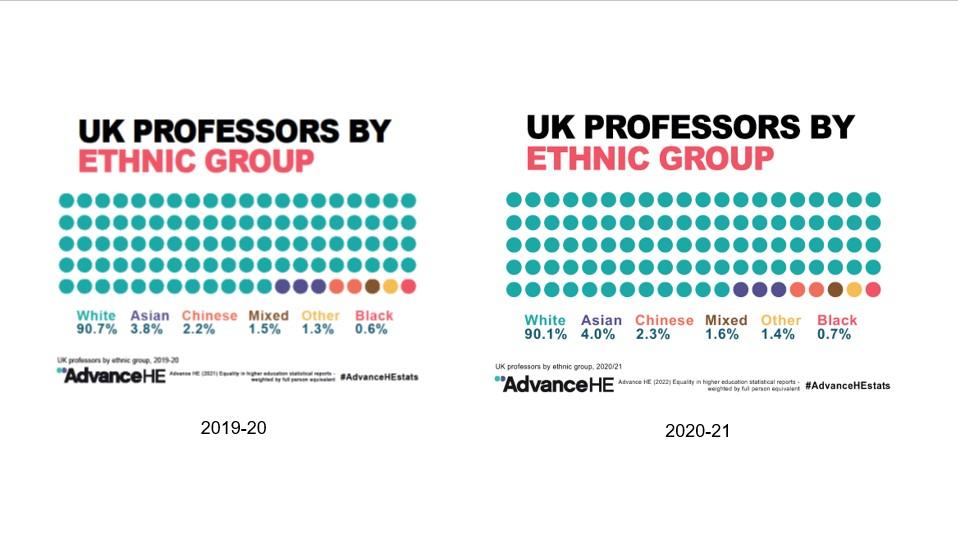
The degree of representation was consistent regardless of staff sex. 7.2% and 2.7% of professors were Black, Asian and minority ethnic males and females, respectively, compared with 6.9% and 2.5%, respectively, in 2019/20.
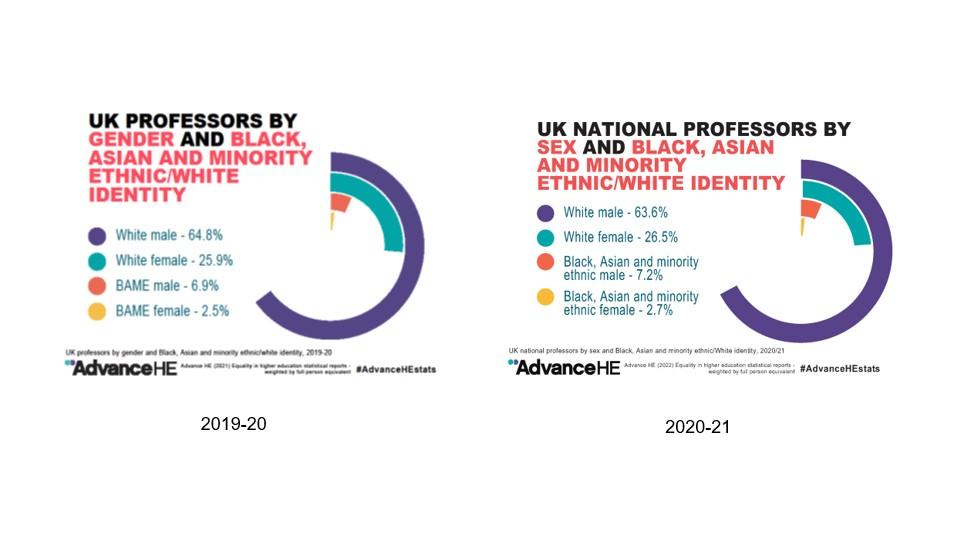
However, there is hope for greater improvement in the representation of Black, Asian and minority staff in senior academic positions in the coming years, as shown in the pipeline of Black, Asian and minority ethnic postgraduate research students, increasing from 18.6% in 2019/20 to 19.9% in 2020/21.
Student statistical report 2022
Headline findings:
-
The awarding gap There is welcome evidence that work addressing the ethnicity degree awarding gap are starting to make a difference with it decreasing from 10.8 percentage points in 2019/20 to 9.0 percentage points in 2020/21. There is still some distance to go as evidenced by UK domiciled Black qualifiers who remained far less likely to be awarded a First or 2:1 than any other ethnic group, though it should be noted that there has been a slight improvement from 66.3% in 2019/20 to 67.2% in 2020/21.
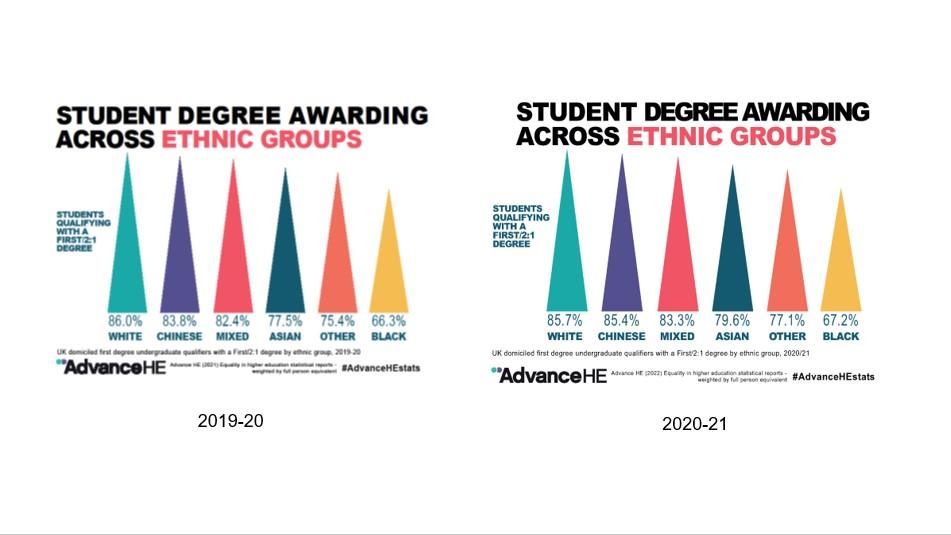
-
Disability Although this reporting year saw more students who disclosed as disabled, this increase has been with those in the preceding years. Disability disclosure rates among students in UK higher education have nearly doubled since 2010/11, rising from 8.0% to 15.2% in 2020/21. There has been a noticeable rise in disabled students disclosing a mental health condition from 20.5% in 2016/17 to 29.4% in 2020/21. Increased awareness and a decrease in disability stigma may have resulted in a rise in disability disclosure.
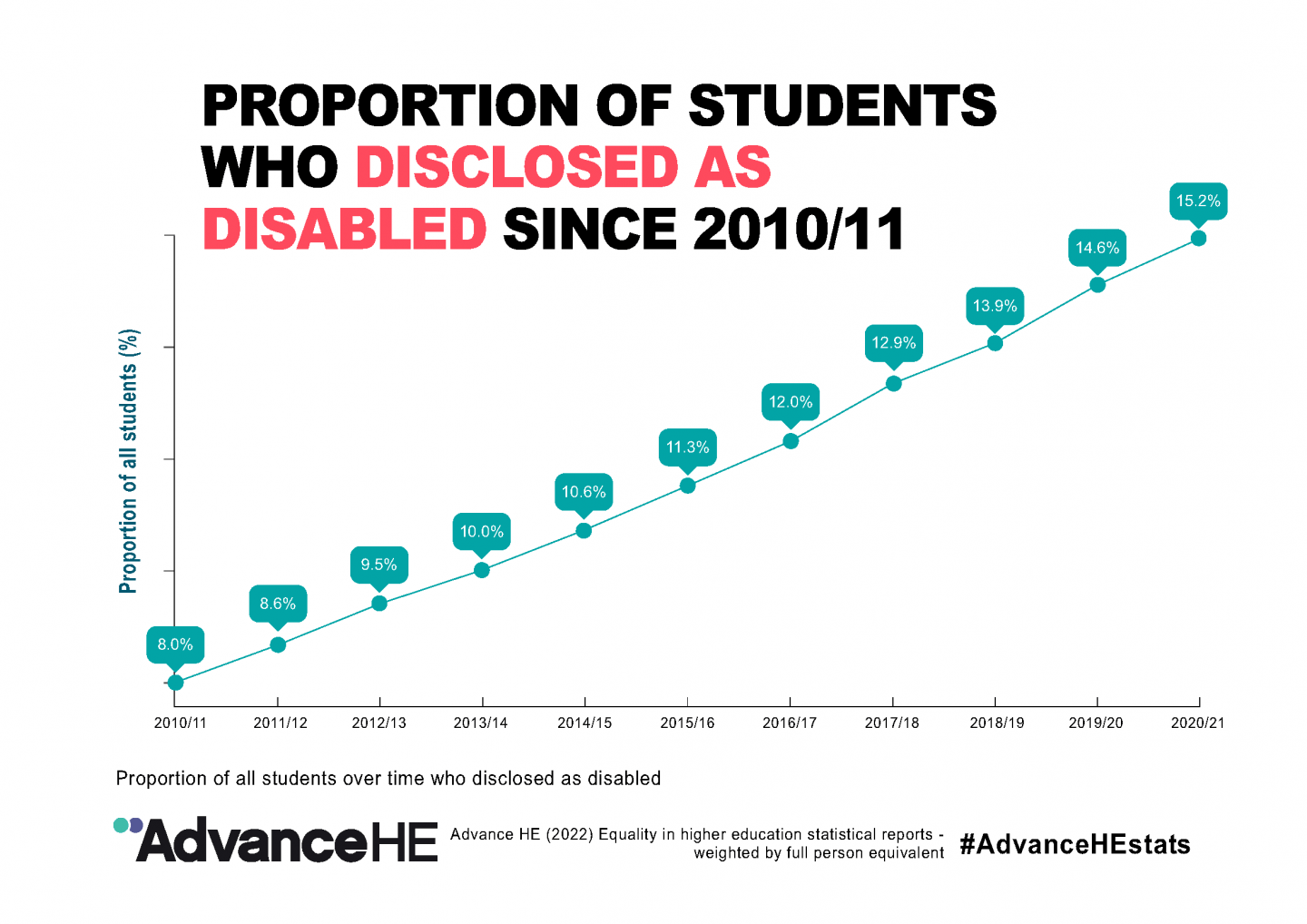
There is a significant drop in the proportion of disabled students receiving the Disabled Students Allowance (DSA).
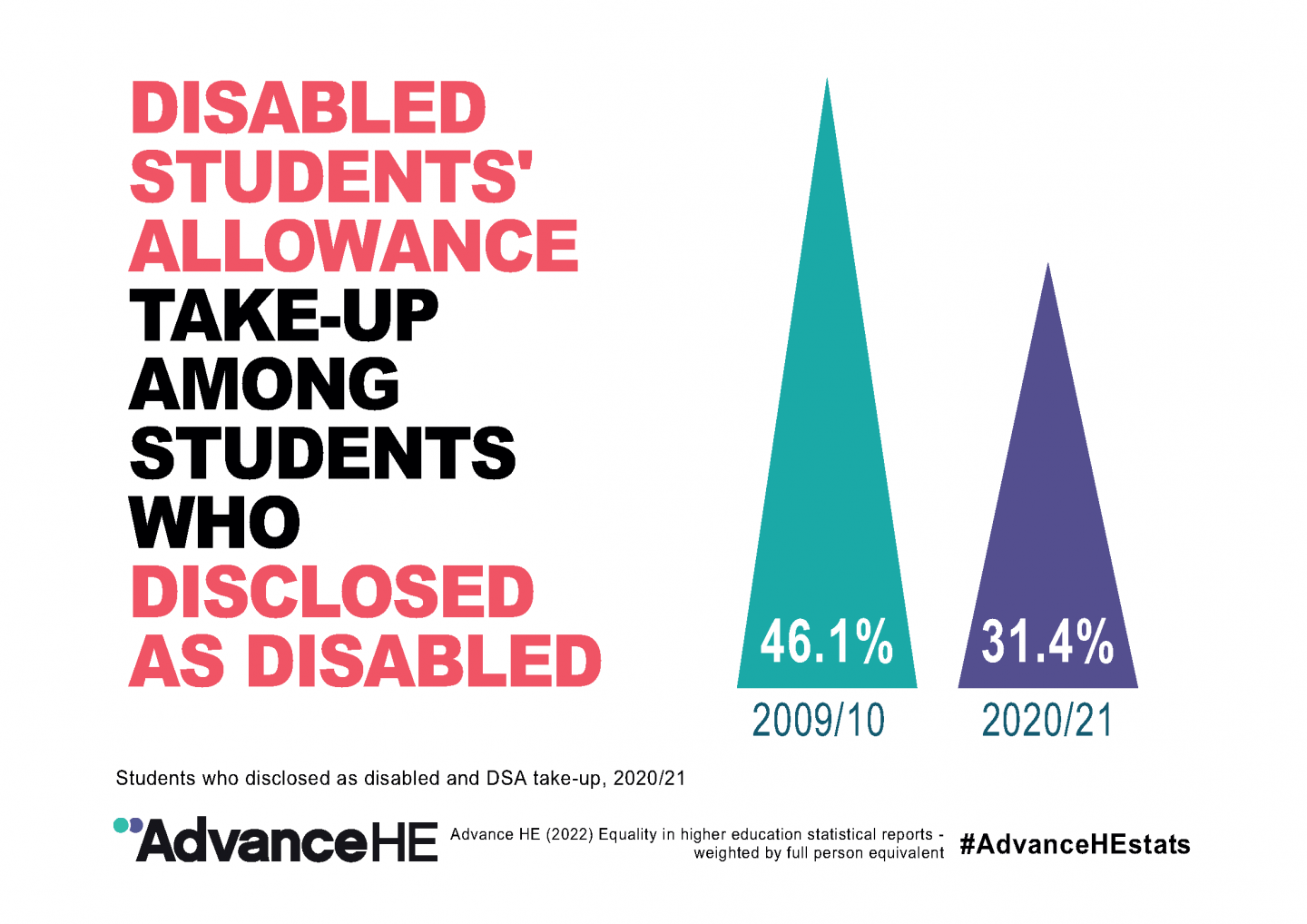
Students accessing DSA funding may also have been affected by changes to DSA allowances, particularly those students funded by Student Finance England (SFE) and the Student Bursaries Unit.
Changes to the staff and student records
Non-mandatory returns for professional and support staff
In 2019/20, HESA changed the way data were collected for professional and support staff, making returns for this population of staff voluntary for HE providers in England and Northern Ireland.
Despite a growing number of providers being included in the HESA records, the overall population of professional and support staff has continued to fall since this change was implemented. Beyond overall numbers, this change has limited the interpretability of this population of staff – compared with their representation in the 2018/19 staff record (i.e. the last academic year that these data were mandatory to provide), professional and support staff: (i) from Asian and Black ethnic backgrounds; (ii) aged 41 to 60 years’ old; (iii) who disclosed as disabled; and (iv) identified as female, were less likely than their counterparts to be represented in the 2020/21 staff record. What this finding reveals is that by allowing HE providers to choose whether they submit data on their professional and support staff, we lose the ability to interpret changes in this sample in a reliable way.
Mandatory returns on student trans status and sexual orientation
In contrast to the changes seen in the staff record, HESA has increased the amount of information that providers must return on their students, making it compulsory for providers in England, Northern Ireland and Wales to return data on students’ trans status and sexual orientation in the 2020/21 record. This has dramatically improved the reliability of these data, with coverage on students’ trans status increasing from 63.7% of all students in 2019/20 to 85.3% of all students in 2020/21, and from 75.1% to 91.0% of all students in 2020/21 for students’ sexual orientation.
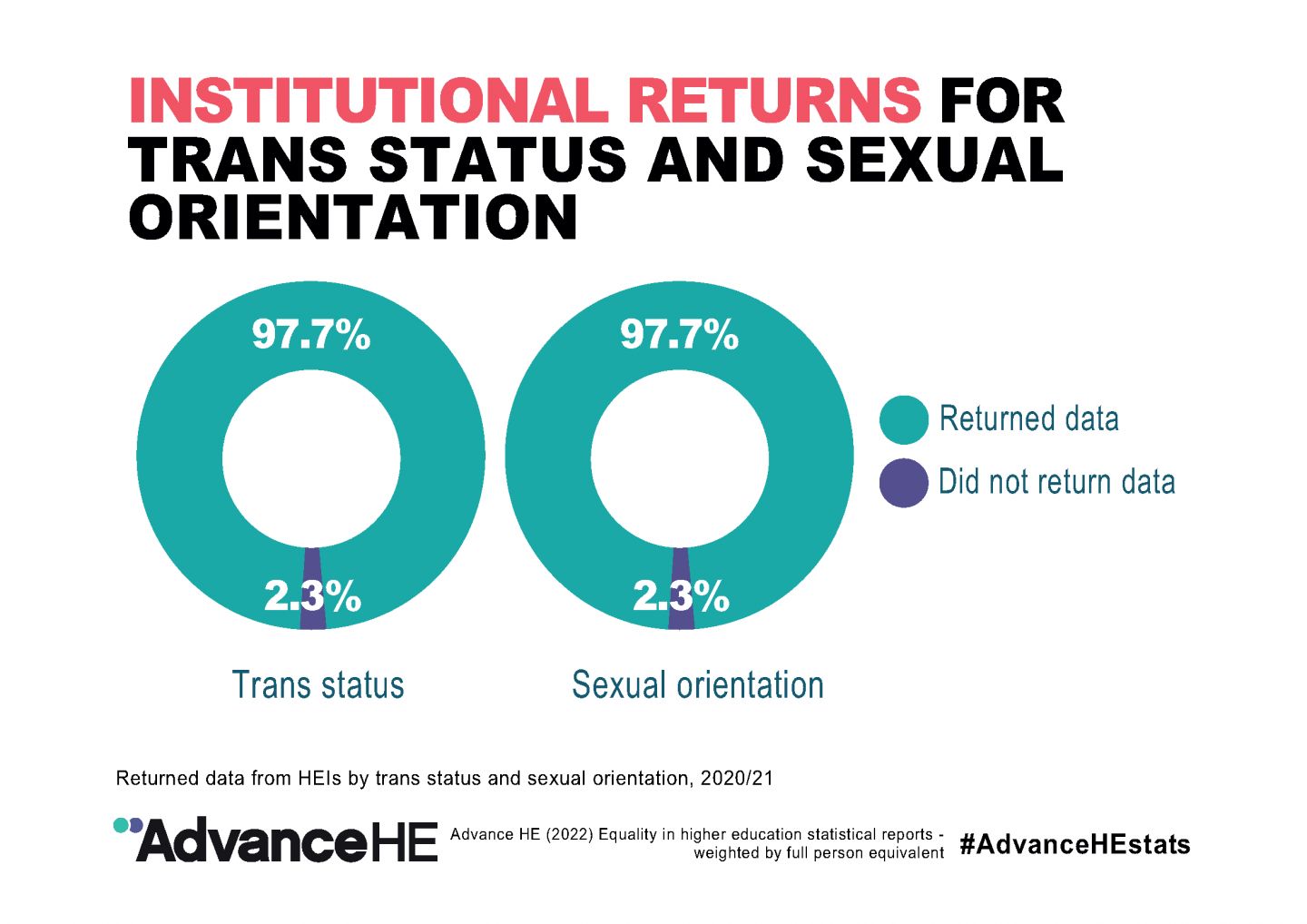
Amanda Aldercotte, Head of Knowledge and Research, said, “These reports provide detailed insights and evidence of the continued and steady progress that we’re making as a sector, as well as the work that we still need to do to create the conditions in which all talents can flourish and where there is the opportunity for all to realise their potential.
“While it’s very encouraging to see the sector’s efforts are starting to make an impact, we all acknowledge that there is still a way to go – particularly for progression and degree outcomes for Black staff and students respectively, for the career progression of female staff to more senior positions, and for those staff and students with disabilities, with the corroboration that mental health is a mounting challenge for the sector.”
The full Students statistical report 2022 and Staff statistical report for 2022, along with a full set of infographics are available for Advance HE members here
Join our webinar: Equality in Higher Education: insights from the 2020-21 staff and student records, 10:00-11:00, 22 November 22 exploring how these insights can be translated into institutional aims and areas for additional research.
Notes:
New data tables added to the 2022 reports
Two new sets of data tables are included in the 2022 student report, exploring students’ sex and religion and belief in greater detail. For the staff report, we have expanded our coverage of staff sex by including those who selected ‘Other’ where possible.
To better reflect the student and staff populations, and align with Advance HE’s guidance on monitoring protected characteristics, a series of new data tables has been added to the online data tables in the ‘Sex’ sections of both the student and staff reports. Specifically, the data is presented in two ways – the first being broken down into ‘Female’ and ‘Male’, as in previous reports (to allow for year-on-year comparisons of the percentages); while the second is unique to the 2022 report, presenting the data for students who selected ‘Other’. Notably, this population of students has doubled since 2018/19, from 0.1% of the student population to 0.2% to in 2020/21, making it important sample of students to begin monitoring in a standardised fashion. Although considerably smaller in numbers, a similar increase in representation of those selecting ‘Other’ was seen in the staff population, jumping from 0.0% in 2018/19 to 0.2% in 2020/21.
For students’ religion and belief, the intersectionality tables presented in section 5 have been expanded to present how this characteristic interacts with students’ age, disability status, ethnicity and sex. Not surprisingly, there was a high degree of overlap between students’ ethnicity and their religious background, with one in six UK domiciled Black, Asian and minority ethnic students describing themselves as having no religion, compared with one in two UK domiciled White students.